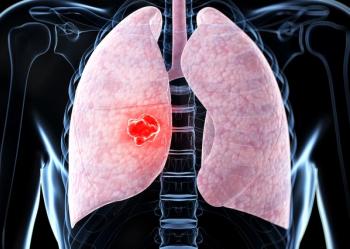
- ONCOLOGY Vol 16 No 11
- Volume 16
- Issue 11
Psychological Complications of Prostate Cancer
William Pirl and Jeffrey Mello present an informative overview of the psychological impact of prostate cancer. They also provide a practical framework for distress management, as promulgated by the National Comprehensive Cancer Network (NCCN).
William Pirl and Jeffrey Mello present an informative overview of the psychological impact of prostate cancer. They also provide apractical framework for distress management, as promulgated by the NationalComprehensive Cancer Network (NCCN).
By identifying the dearth of psychosocial information about men in generaland by suggesting a systematic approach to management, the article can behelpful to the primary oncology team (physician, nurse, social worker) andothers concerned about the quality of life of men with prostate cancer. Pirl andMello cover much ground quicklydistress, depression, anxiety, delirium,interventions, etcand in doing so are able to create, in broad strokes, atopographic map of the terrain.
First, however, a discrepancy needs to be clarified. Pirl and Mello state,"In fact, one study of many different types of cancer, including prostatecancer, found no differences in levels of psychological distress among patientswith different cancers."[1] However, another reading of the abstract cited(Zabora et al, 1996) reveals the following: "The lung cancer groupdemonstrated a significantly higher level of psychological distress (F = 5.7, P< .001) than the other diagnostic sites with the exception of hepatoma andbrain where there was no significant difference." Thus, there aredifferences in psychological distress levels among groups with differentcancers.
Why So Little Psychosocial Information About Men?
Despite the fact that cancer occurs more commonly in men, most of thepsychosocial literature has focused on womenspecifically and overwhelmingly,women with breast cancer. It is also widely accepted that, overall, men seekmedical care less often than women. The lack of information about men’spsychosocial health may be another manifestation of this trend.
Traditional male role, age, race, and sexual orientation are all relevantinfluences discussed by Pirl and Mello, and the authors are right on target withtheir exposition. When the age group and common physical symptoms of prostatecancer patients are considered, the influence of the traditional male role isextremely important. As noted by Pirl and Mello, the physical symptoms and lossof control associated with the disease can be humiliating, frequently resultingin a sense of shame, demoralization, and social withdrawal.
The authors do not mention several other relevant factors that meritdiscussion. To begin with, the health-care system is not friendly to men. Mostmen (and many women) perceive psychosocial interventions as being overly focusedon the extraction of emotions and personal information rather than on solvingthe myriad of practical problems created or exacerbated by cancer.
This is not to say that feeling emotionally connected to loved ones is notvalued by men; for most men, it is the ultimate value. But meaningful andfocused activity is more highly valued and is experienced by men as havinggreater therapeutic value as they attempt to communicate and emotionally connectwith others during a time of crisis. This is borne out by the relative successof educational and problem-solving groups for men, as opposed to the echoingreverberations of empty rooms housing support groups.
Messages From theHealth-Care Community
The messages from the health-care community to men and their caregivers aboutpsychosocial concerns have been ambiguous at best. Two recent books that focuson the needs of patients and their caregivers are Dr. Patrick Walsh’s Guide toSurviving Prostate Cancer[2] and Prostate & Cancer: A Family Guide toDiagnosis, Treatment & Survival.[3] These are both very informative andinfluential books.
In Dr. Patrick Walsh’s Guide to Surviving Prostate Cancer, the indexcontains four single-page listings relating to "psychologicalproblems," but nothing on the psychosocial impact of prostate cancer islisted in the table of contents. In Prostate & Cancer, a book of 342 pages,there are two pages on support groups (not the treatment of choice for men) andvirtually nothing else relating to the importance of psychosocial concerns. Thechapter on watchful waiting says nothing about how to cope with this incrediblydifficult process (and never discusses dealing with the often humiliatingphysical symptoms endemic to prostate cancer and its treatment).
If health-care professionals do not initiate the conversation and sanctionthe importance of psychosocial concerns, men will feel that they are on theirown in managing their fears and problems. This powerful message from thehealth-care community reinforces the traditional male role of exaggeratedself-reliance that all too frequently leads to unnecessary isolation for thepatient, and distress and frustration for the caregivers.
These basic concerns are the essence of what living is all about, and are asimportant as extending life itself. Although the prostate gland is only the sizeof a walnut, the psychosocial implications of the disease and resulting sense ofexposure and fear ripple throughout the universe of the man and his family. Lifeis not meaningful without the ability to share experiences; this is at the coreof what makes us all human.
Summary
Pirl and Mello provide an important service by identifying the primarypsychosocial complications relating to prostate cancer. Hopefully, theiroverview will lead to greater interest in defining the specific psychosocialneeds of this patient population. In addition, their article may help to remindhealth-care professionals of their unique responsibility to initiate, support,and model open and honest communication about the complexities of prostatecancer.
References:
1. Zabora JR, Brintzenhofeszoc KM, Smith ED: Prevalence of psychologicaldistress by cancer site (abstract 1627). Proc Am Soc Clin Oncol 15:507, 1996.
2. Walsh PC, Worthington JF: Dr. Patrick Walsh’s Guide to SurvivingProstate Cancer. New York, Warner Books, 2001.
3. Marks S: Prostate & Cancer: A Family Guide to Diagnosis, Treatment& Survival (revised). Tucson, Fisher Books, 1999.
Articles in this issue
about 23 years ago
Study Reveals Benefits of Drug Pump for Cancer Painabout 23 years ago
Three Themes to Guide von Eschenbach as NCI Directorabout 23 years ago
Update: AIDS United States, 2000about 23 years ago
Rituxan Delays Disease Progression in Indolent Non- Hodgkin’s Lymphomaabout 23 years ago
Radiation Therapy Alone Can Be Used to Treat Rectal Cancerabout 23 years ago
Oncologic Imaging, Second EditionNewsletter
Stay up to date on recent advances in the multidisciplinary approach to cancer.

















































































